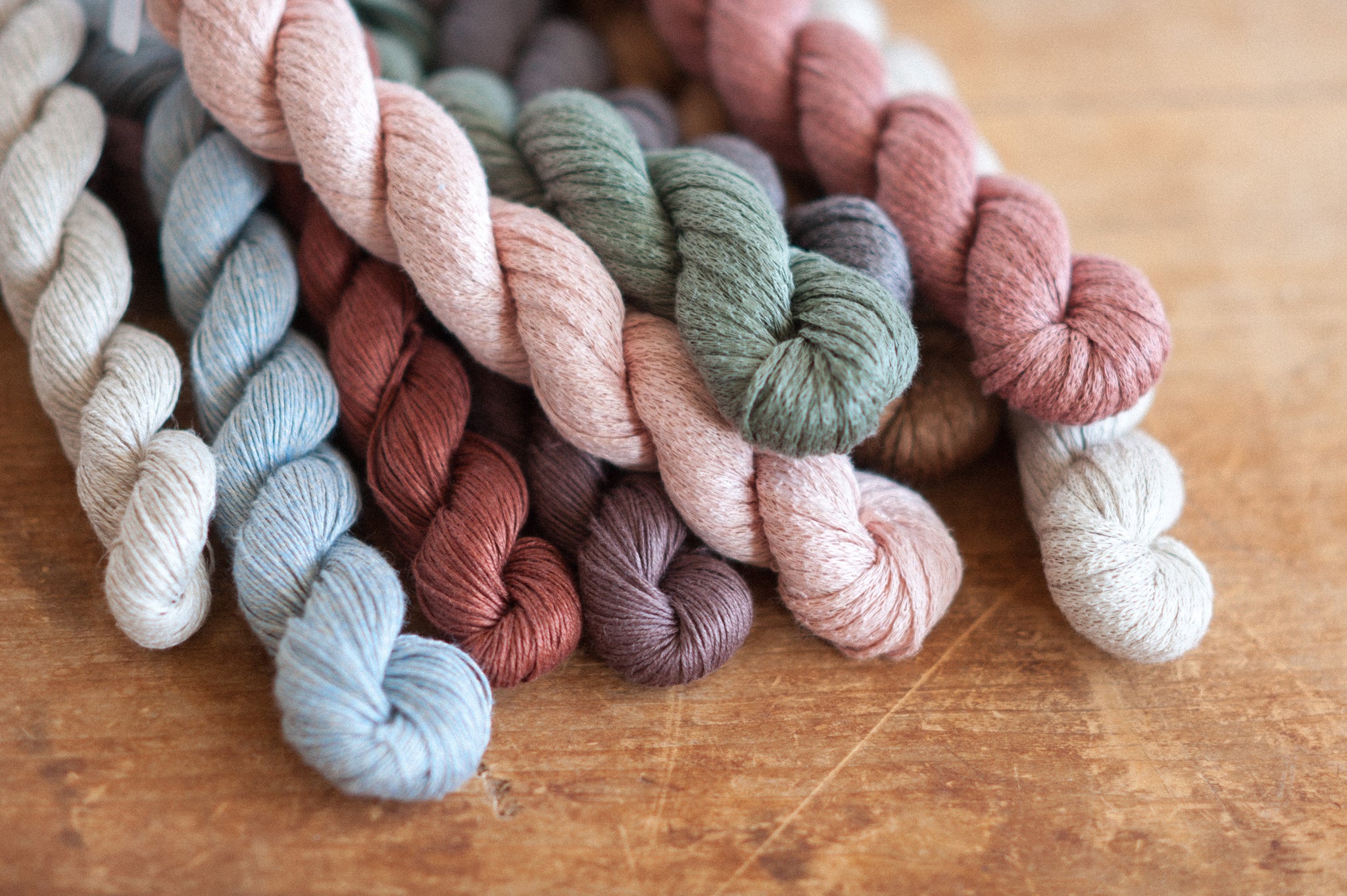linen: care and feeding

We love linen, and we know you do too (because you keep telling us…a million thanks to you, dear fellow makers!). We've been lucky enough to work with some truly awesome designers over the years, and sometimes we get to have them chime in on our blog!
Today I'm consolidating several posts from designers Elizabeth Doherty and Elizabeth Smith on the finer points of working with our own Sparrow and Kestrel, plus some favorite methods from Quince staffers. Hope these tips are helpful in your own linen projects!
Winding and skein management
Over the years, we've recommended that folks steer clear of using a ball winder for Sparrow, just because it's so clingy in the skein and gets so easily tangled on the swift. Slow and steady (and by hand) wins the race in winding our little fingering weight linen fiber.

Elizabeth Doherty's linen pieces Lina (left) and Colina (right)
Additionally, in her post Warming up to Linen (written around them time we published her two sweet linen tops Lina and Colina), Elizabeth Doherty recommends also steering clear of a center-pull ball for that same reason—the yarn likes to stick to itself in transit from ball to needle.
For skein management in Kestrel, in Elizabeth's post Working with Kestrel, she suggests a good method for managing the yarn while working with it. Kestrel can get pretty twisty between skein and needle, and her solution is ingenious, and some of us here use it regularly!
 © Elizabeth Doherty
© Elizabeth Doherty
Joining a new ball
Also in Working with Kestrel, Elizabeth details her specific method for joining a new ball of Kestrel that, while it involves a little sewing, makes a very neat finished product.
Around the office, most folks simply knit just one stitch with both the old and the new skein, and weave in the ends later as usual. Knitting more than one stitch with these yarns makes it more obvious that there's a join there.
Our lead yarn processor loves the Magic Knot method for joining a new ball of linen.
Gauge and fabric management
Elizabeth Smith—after we published several of her Kestrel designs in 2018 (Mira, Kai, and Laguna)—wrote up Seamless Knitting in Kestrel, her take on what to do if you knit very differently between working flat and in the round. She takes us through using two different needle sizes to maintain fabric consistency.

Elizabeth Smith's linen pieces, left to right: Laguna, Mira, and Kai
In Elizabeth Doherty's Sparrow post, she suggests that because we tend to tense up in order to achieve the same stitch size we would with wool, it's far better to relax and change needle size than to try and maintain that tension—for the knitting and for your body!
Washing and blocking
Also in her Warming up to Linen post, I love Elizabeth's suggestions and considerations on washing and drying swatches (and garments!). My Walkway tee (from Framework, by Norah Gaughan) is a thing that I wear practically every week, and I have washed and dried it so many times! It is super soft at this point. Do be aware of your equipment though as she says, and be aware of the potential for color loss. Best to try with your swatches first (and make them big!).
Thanks to all for sharing your tips and tricks! What are your favorite methods for working with our linen yarns?
We hope this note finds you and your loved ones well and safe.
xoxo, jerusha



















